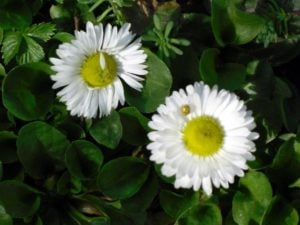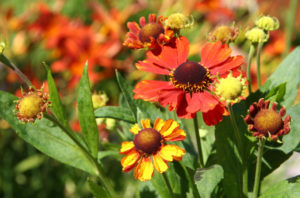
It is difficult to trace patterns in the behavior of chrysanthemums — they, as poetic natures, are characterized by a special frivolity and unpredictability. In one area they live and bloom in a timely manner, in another they were abandoned. So in most cases, buying plants is an entertaining and not very expensive lottery.
Overseas lovers of winter-hardy chrysanthemums do not consider it hopeless even to buy potted “disposable” plants. Who knows what their potential is? Sometimes they survive.
Poetry is over, I give recommendations on cultivation and reproduction.
Growing and care
Chrysanthemums need a sunny, well-heated area with drainage. By their nature, they are more prone to arid areas. At low and humid temperatures (for example, in the area of spruce forests) they have been swinging for so long that they do not have time to bloom.

The composition of the soil is not too important – as long as it is not heavy clay, but fertility is of great importance. On sparse soils, chrysanthemums may not bloom at all. They are fed in the first half of summer, 2-3 times watering with a solution of mullein (or something similar) and a complex mineral fertilizer.
The acidity of the soil is preferred, pH 6-5. 5, so poorly decomposed peat as a top dressing will be very useful. According to other sources, a little alkalinity is better.
If chrysanthemums are watered, then only for active growth and flower buds. All this pampering stops by mid-August, the plants begin to prepare for winter. Chrysanthemums are especially sensitive to low temperatures in combination with dampness. Perhaps that is why a thickened planting is not suitable for wintering, because humidity increases.

An important point is that plants do not like to be disturbed too late, this affects winter hardiness. It’s funny that they sell them just in late summer and autumn. Maybe this explains the unexpected weaknesses of the plants and the disappointed conclusions about the liar sellers. Such a sign is given: if there are no vegetative shoots at the base of the bush, it will not overwinter. Whether these shoots indicate good rooting, whether the young parts of the bush overwinter better is unknown.
Reproduction
1. Seeds. They rarely ripen in the open ground, so you can move the plant home and collect seeds from it, or you can just buy them. In any case, the seedlings bloom only after 5-6 months. Therefore, they are sown in February-March in a mixture of turf, peat and sand in a ratio of 1:2:1 and sprinkled with sand. Seedlings appear in about a week, and at the end of spring frosts, seedlings are planted. The seed progeny (at least from their plants) can be very heterogeneous and will not repeat the parental characteristics.

2. Division. In the spring, as soon as small shoots appear.
3. Cuttings. On cuttings and cut shoots. Do it as soon as possible – after all, the success of wintering depends on it. They are rooted by the root in a greenhouse, under a piece of lutrasil (or similar material) in any loose moist soil – sand, perlite, peat. The most specific recommendations indicate the optimal time of cuttings – before the beginning of April. But since chrysanthemums do not grow in our country at this time, it is necessary to keep the queen cells in the cellar or overexpose the late-rooted cuttings for the first winter in a cool room where the temperature is maintained at no more than 10 degrees and good lighting is provided.




Leave a Reply